Susan Bright’s (1) argues that the self portrait is a photographic compulsion, an argument supported by the rise of the selfie (see here), but in nearly fifty years of photography I cannot remember taking a single, intentional self portrait. Self portraiture is a broad church full of different approaches (i), with each approach revealing something of the photographer’s nature, so I conclude that not having succumbed to self photography must also be revealing.
Self portraiture is an enquiry into identity, if we intend to use ourselves as a subject we must answer the fundamental questions of “who am I, where do I fit into the world?” But is the answer how we see ourselves or how others see us? Like the interpretation of a photograph, our persona is contextual, we are defined by our education, surroundings, profession, possessions, family and associations, these contexts establish our status within society and, much as we like to think we are independent and self led, most of us tend to play the role expected of us. (ii)
Historically many societies have interpreted the shadow as proof of existence, the visible representation of our soul, the original paradox, the intangible object that proves the substance of the tangible subject (iii). I have set this series in a shadow world where the three dimensional signifiers of my identity are absent, the audience only sees my shade, my essential essence in the landscape of my choice. This incognito, ambiguous presence, fits my self perception. Over the years I have used the camera as a way to keep my distance, the observer, the watcher, the recorder of events attended but not quite part of, the missing face in the group photograph.
The shadow self portrait has deep roots in the history of art and I positioned my series in this context (iv), referencing my images, not just to photographers such as Friedlander, Maier and Stielglitz but to other artists like Renoir and Monet. By connecting my series in this way I intended to access their symbolism and to develop three primary ideas, the “shadow of the gaze”, the “shadow of the creative hand” and the “transition between reflection and shadow”. (v) (vi) But overall I am exploring how my shadow relates to the landscape I typically photograph so this series is less autobiographical and more a discourse on the act of my photography.
The Primary Images from the Final Series
The Final Series as Intended as a Photo-book
The Secondary Images from the Photo Book
- FA 01a Bridge Over A31
- FS 02a Ditton Manor Pond
- FS 03a Pedestrain
- FS 04a Bench
- FS 05a Scholar
- FS 06a Wire
- FS 07a Branches
- FS 08a Flint
- FS 09 a Root
- FS 10a Blocks
- FS 11a Barrow
- FS 12a Screen
- FS 13a Waverley
- FS 14a Root
Research and Develoment
This project has had a long gestation period. The original concept was to work with reflections but this quite quickly developed into using shadows. My research built on those early ideas.
- Very Early Ideas and Research for Assignment 3
- Vivian Maier: Self Portraits
- Reflective Self Portrait: Henri, Friedlander, Steele-Perkins and Scianna
- Shadow Self Portrait
- The Mysterious Shadow
- The History of the Shadow Self Portrait
- Shadow Self Portrait Contact Sheets
- Black and White Processing
- Selfie or Self Portrait
- Themes in Assignment 3 Self Portrait
Notes on Text
(i) I have looked at a number of different ways in which the shadow self portrait has been used by contemporary photographers in an earlier essay Shadow Self Portrait.
(ii) An earlier essay The Mysterious Shadow explores how shadows have been historically interpreted.
(iii) Christopher Butler (2) neatly encapsulates post modernist theory as “discourses put you in your place”; our identity becomes the role we are expected to play, and usually do play, as defined by the script approved by society.
(iv) The desire to relate my series back to historical art came from two sources. Firstly my research on Francesca Woodman showed me that contemporary art can be created in the context of an exploration of the history of art, I saw that her understanding of historical conventions fuelled her creativity. In my essay on her work I wrote “I see her more as a product of her upbringing, an intense artist who had an exceptional awareness of the history of, not just her art form, but of sculpture, music, painting and performance”. I was inspired to bring a wider history than just photography into this series. The second motivation came from reading Victor Stoicha (3) and Ernst Gombrich (4). These two books were illuminating and exciting and probably the first books I have ever read by Art Historians as opposed to Photographic Art Historians. They opened my eyes to the idea that the shadow as a subject or as a technique had roots as deep as humankind itself and I wanted to pursue this theme in my work.
(v) An earlier essay The History of the Shadow Self Portrait looks at the historic origins and development of these ideas and the use of shadow self portrait in art.
(vi) In the interest of keeping this introduction as near as possible to the required 300 words an explanation of how these themes have been used in this series is included in a separate essay Themes in Assignment 3 Self Portrait
Sources
Books
(1) Bright, Susan (2010) Auto Focus: the Self Portrait in Contemporary Photography. London: Thames and Hudson
(2) Butler, Christopher (2002) Postmodernism: A Very Short Introduction. Kindle Edition. Oxford: Oxford University Press
(3) Stoichita, Victor I. ( 1997) A Short History of the Shadow. London: Reaktion
(4) Gombrich, Ernst (1995) Shadows: the Depiction of Cast Shadows in Western Art. London: National Gallery Publications.

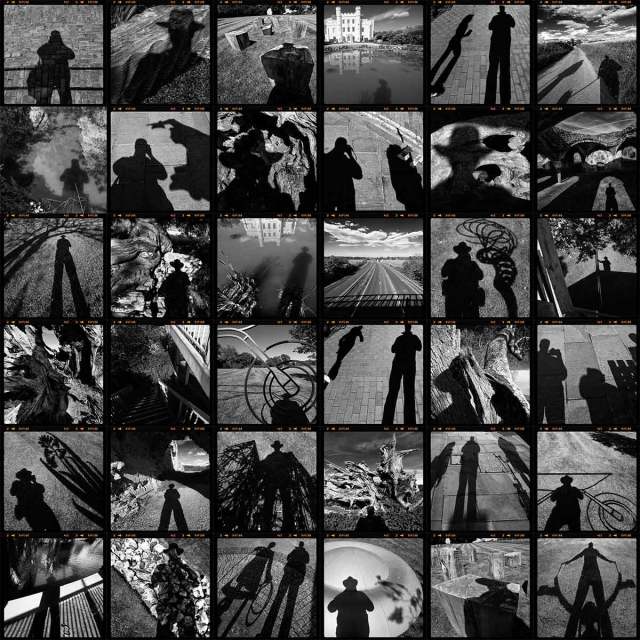
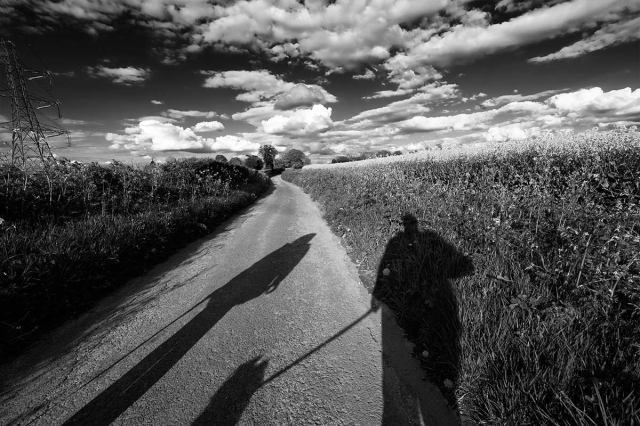
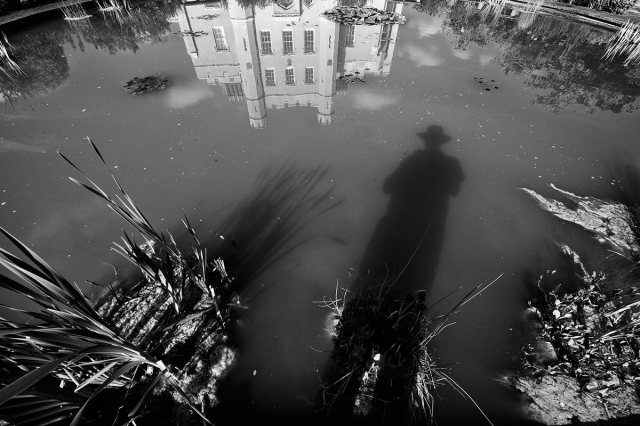
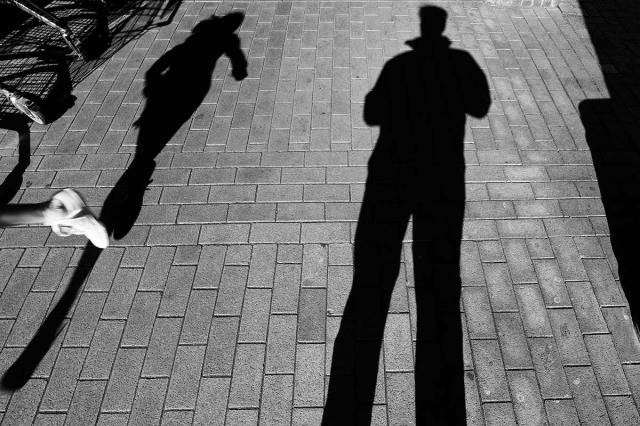
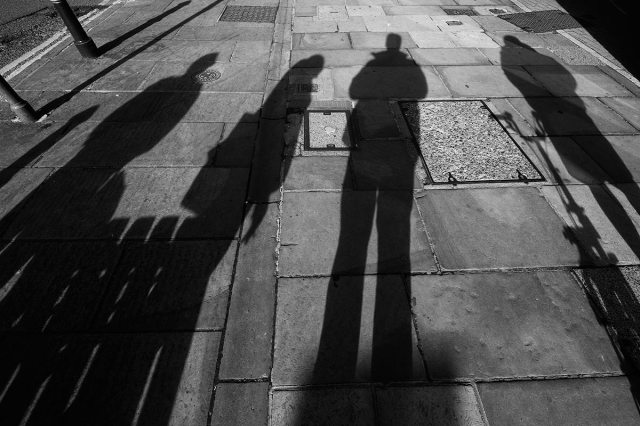
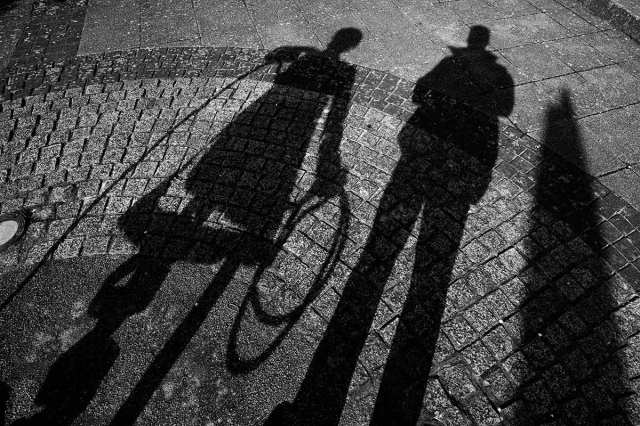
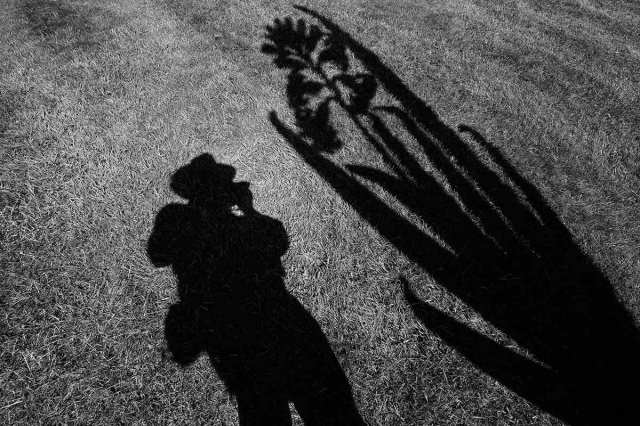
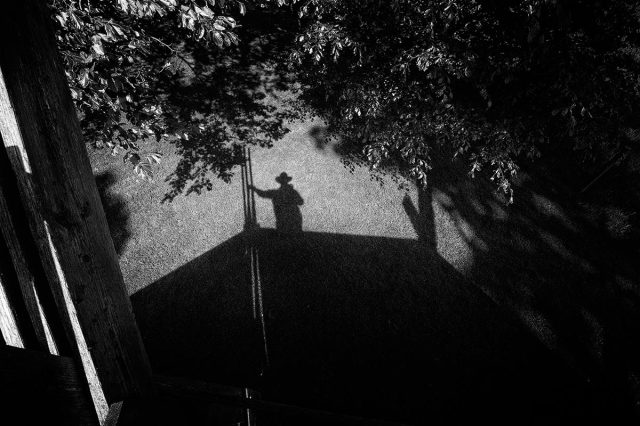
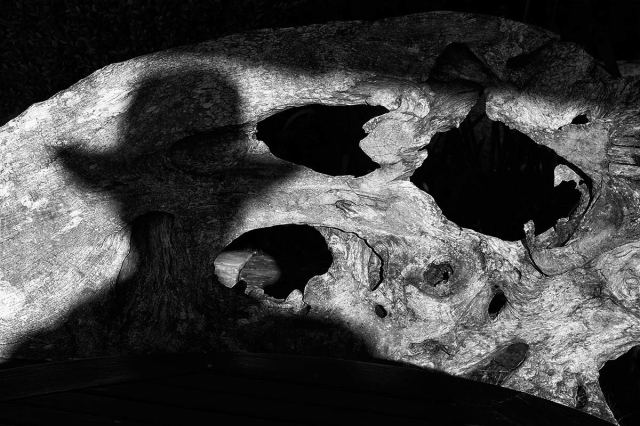
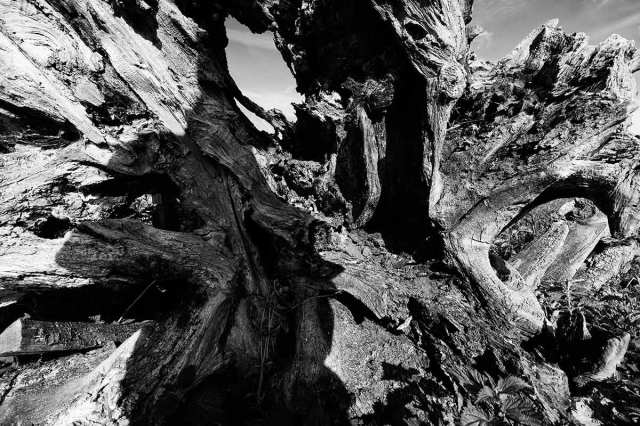
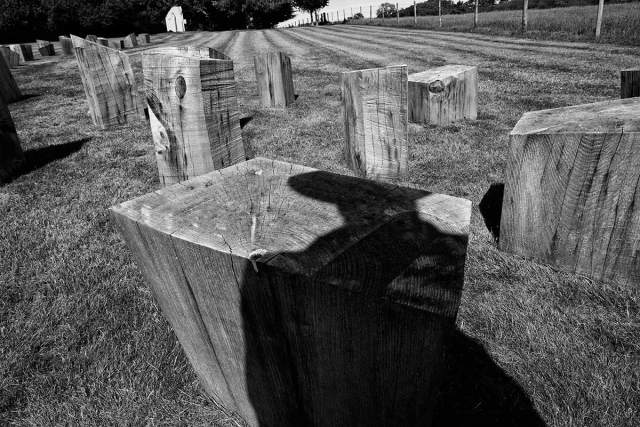
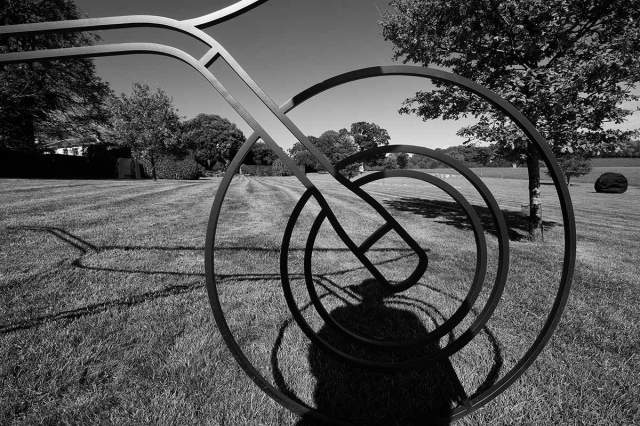
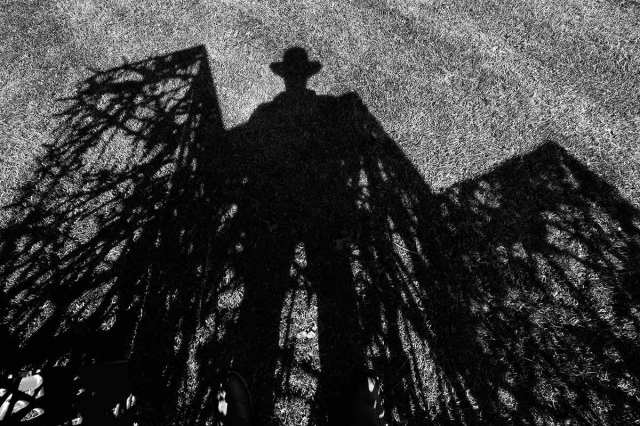
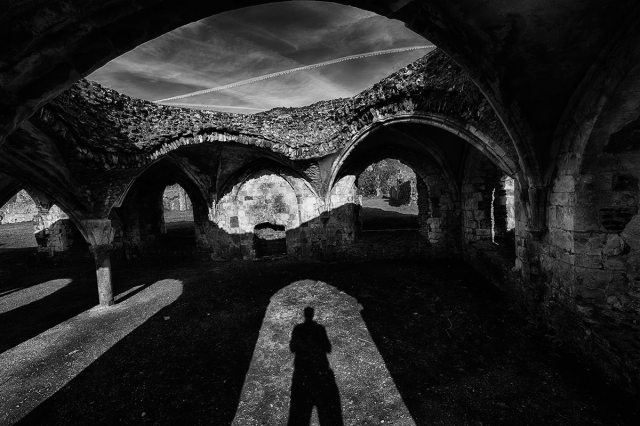
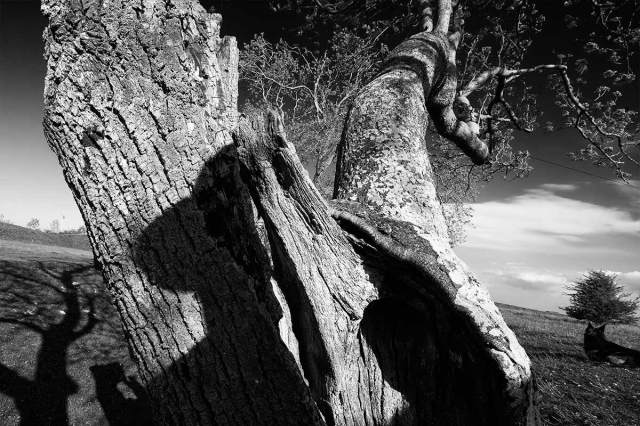
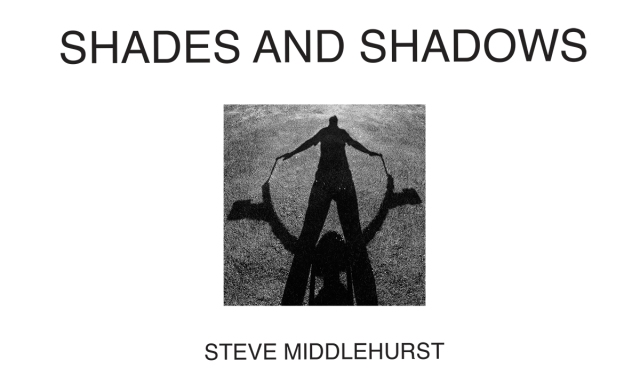



























beautiful series. but the reading a little bit confusing. in all these photographs the shadows (your and others) create additional very contrast geometry. at the bottom line it can be just column or tree but composed at the right place – leading to diagonal for example. i only can imagine that this is your shadow, but to say that i find it as self portraiture.. i can’t. but it’s only my opinion
I think it’s self-portraiture if you know it’s you and also other people do!
I really like how they look together Steve. I keep thinking of a magic lantern show. Maybe that could be done if you were going to present them to the public in some way.
Thank you Victor for your comment. I respect your opinion Victor and agree that they don’t necessarily provide a recognisable self portrait but it follows something of a photographic tradition including Lewis Hine, Vivian Maier and Lee Friedlander amongst many others. I see these shadows as being representative of me and therefore portraits but it is up to the viewer to reach their own interpretation as you have done.
HI Catherine. That is a very clever idea and probably achievable. There are so many strange links between shadows and other art forms that I had to choose which to focus on so ignored shadow theatre but if one was to display this work in an appropriate location it would be possible to take your idea towards the sort of work done by Christian Boltanski – http://boltansci.blogspot.co.uk
If you ever intend to do it please let me know. I’ll come and watch.
Pingback: Se l'arte è fatta d'ombra - DidatticarteBlog